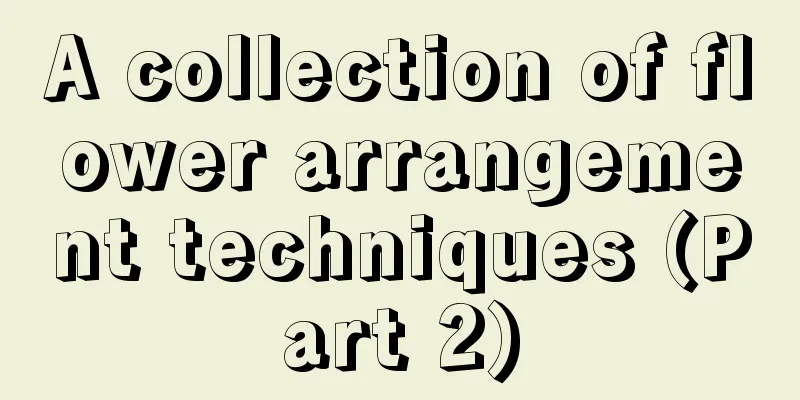A collection of flower arrangement techniques (Part 2)

Wire winding methodThis method can provide support for the flower branches and overcome certain defects in the flower branch shape. Use a metal wire of sufficient hardness to wrap around the flower branches according to your own ideas, but the metal wire should not be too thick so as not to affect the ornamental effect of the flower arrangement. For a more aesthetic effect, you can wrap the wire with green tissue paper or paint it green. Wire threading methodThis method is suitable for hollow flower branches, such as celery, marigolds, gerberas, etc. Choose a wire of appropriate thickness and insert it from the incision or the center of the stamen. If the part near the flower is difficult to penetrate, you can handle it flexibly according to the situation, either not completely penetrating the flower branch, or partially passing through the center and partially wrapping it. Wedge moldingThis method is suitable for rough woody flowers. You can use triangular wedges to insert into the cuts of the branches to achieve natural beauty without revealing any artificial traces. Cutting and bending methodIf the bending angle required by the flower branch is not large, you can use scissors to cut the branch obliquely. The depth of the cut should not exceed 2/3 of the branch diameter. Slowly bend the branch with your hands. Leaf rolling methodFlowers like indigofera and smilax can change their original shape by curling. You can take a leaf, spread it out, and use a thin stick to roll it from the tip to the stem until the leaf still has a certain degree of curl after you let go. Circle Leaf MethodFor leaves with petioles and soft surfaces, such as indigo leaves and ginger leaves, you can take a leaf, bend it, poke a small hole at the tip of the leaf, and then pass the petiole through. Support shaping methodFirst prepare the metal wire and transparent tape, then lay the leaf flat face down, attach the metal wire to the edge of the central vein, and then stick it with transparent tape. Leaf deformation methodThis method is suitable for plant leaves with wide leaves and hard texture, such as palm leaves and iron tree leaves. The leaves can be trimmed into round, fan-shaped and other shapes. |
<<: A collection of flower arrangement techniques (I)
>>: A collection of flower arrangement techniques (Part 3)
Recommend
Are lilies poisonous when placed indoors?
1. No toxicity Lilies are not poisonous. However,...
What to do if the leaves of Spathiphyllum are burnt
1. Reduce sunlight Spathiphyllum requires a certa...
Does Daphne koreana prefer shade or sun?
Does Daphne koreana prefer shade or sun? Daphne i...
Can Tiger Pilan be transplanted in autumn? Precautions for transplanting Tiger Pilan (soil requirements)
Tiger Skin Orchid is also known as Tiger Tail Orc...
Don’t throw away the old soil after repotting. Add some of this, it is more fertile than nutrient soil!
Soil disinfection methods 1. First of all, the ol...
What should I do if the leaves of Catharanthus roseus wilt?
One of the reasons for wilting is potted transpla...
What vegetables are suitable for growing in summer (what crops and vegetables can be grown in summer)
What vegetables are suitable for growing in summe...
How often should I water Wisteria?
How often should I water Wisteria? Generally, you...
Dahlia cultivation tips and precautions
Dahlia has become a popular flower for its bright...
Time and method of cutting of Euphorbia pilosa
Euphorbia cutting time When taking cuttings of Eu...
How to prune cymbidium orchids
Reasons for pruning Because the flowers of Cymbid...
When is the peony usually divided? How is the peony divided and propagated?
1. Division time The time for peony division is g...
When to fertilize sweet potatoes? How to fertilize?
The key to obtaining higher returns from growing ...
When is the best time to repot Anthurium? Repotting methods and precautions
Anthurium repotting time Anthurium needs to be re...
Can the lucky tree be planted in the ground?
Can the lucky tree be planted in the ground? The ...









